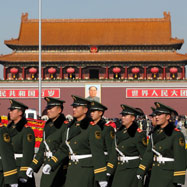Changing Contexts of Chinese Military Strategy and Doctrine
This monograph identifies the contexts which have shaped China's military strategy and doctrine. It argues that these have evolved through Party-Military relations as well as through the Chinese leadership's assessment of the international balance of power. In this framework, the monograph has traced the PLA's strategic and doctrinal transformation from a defensive one to one of limited offence, having global aspirations, affecting further changes in China's military strategy and doctrine.













